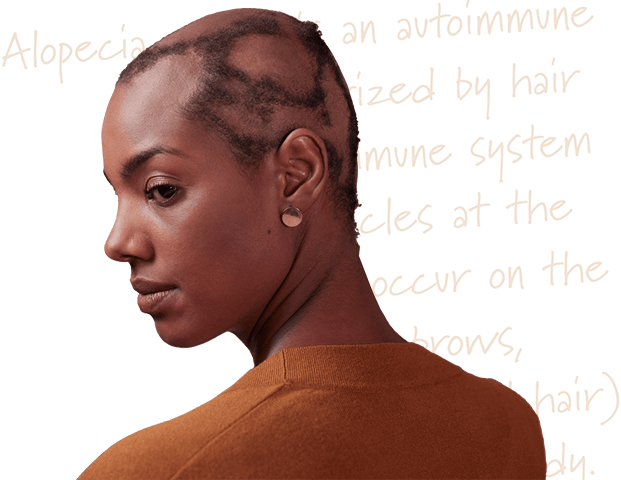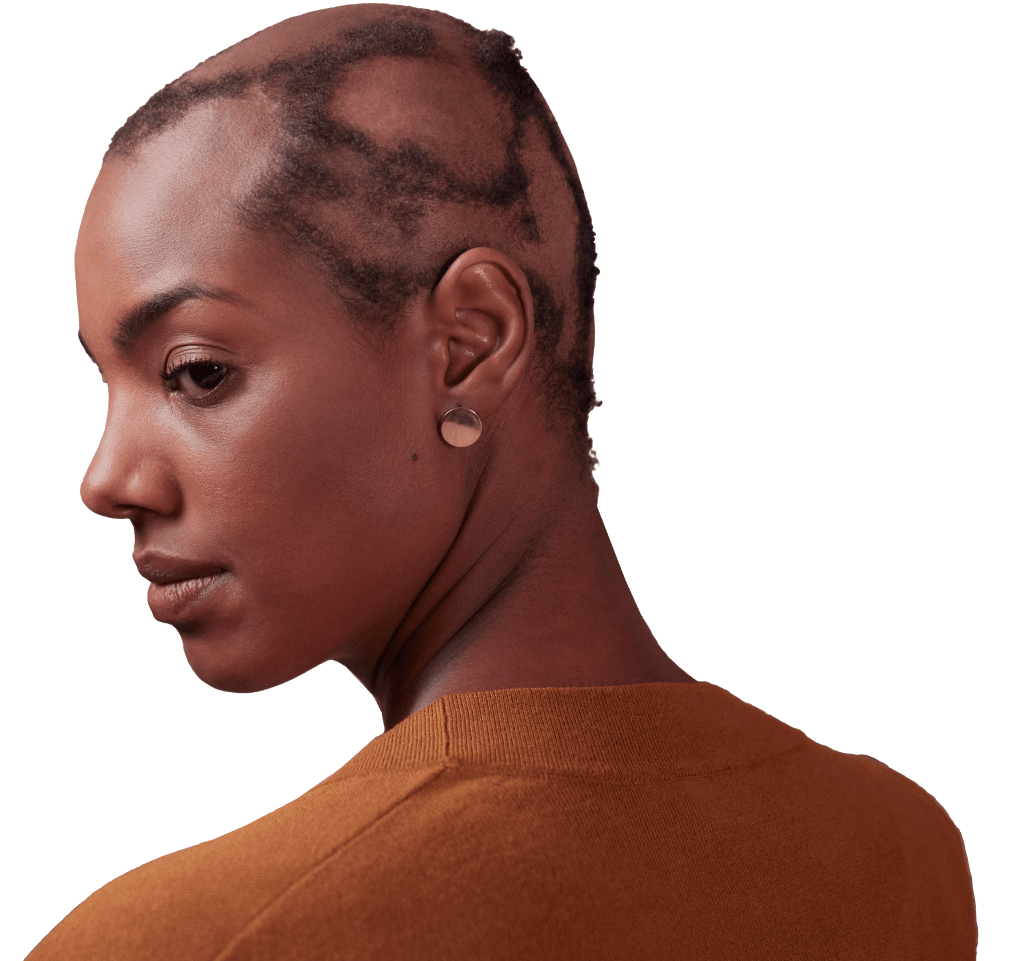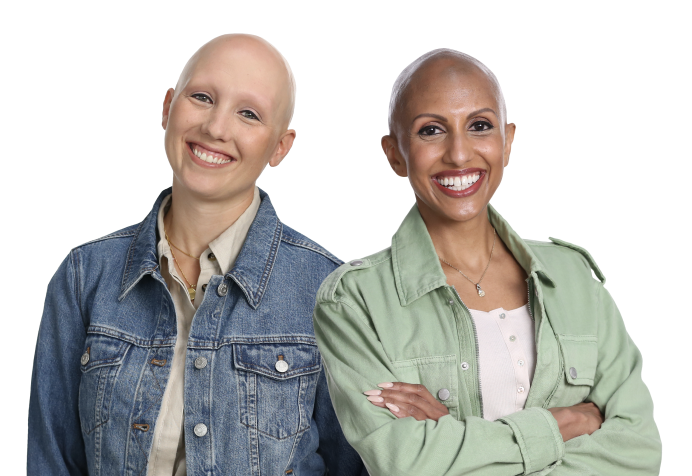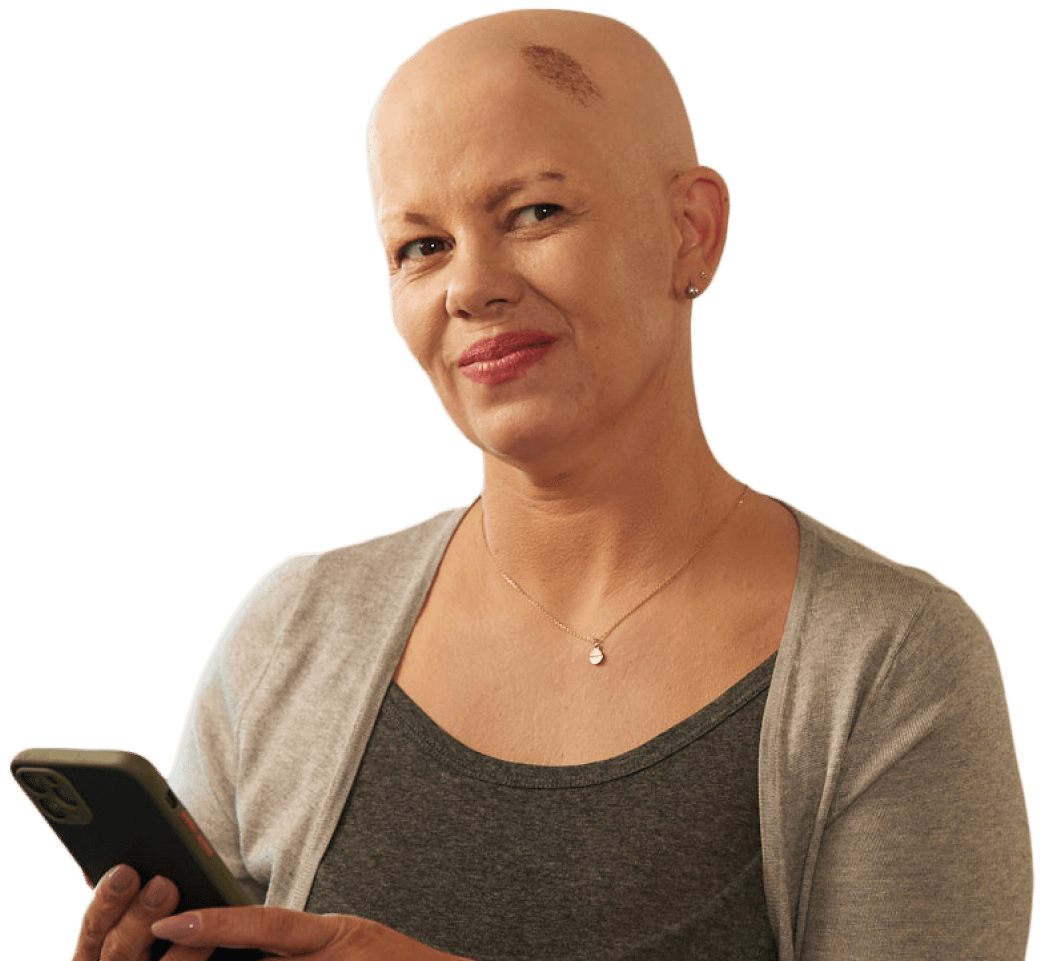i Islam N, Leung PSC, Huntley AC, et al. The autoimmune basis of alopecia areata: a comprehensive review. Autoimmun Rev. 2015: 14(2): 81-89.
ii Pratt CH, King LE Jr, Messenger AG, Christiano AM, Sundberg JP. Alopecia areata. Nat Rev Dis Primers. 2017;3:17011.
iii Food and Drug Administration. The voice of the patient: a series of reports from the U.S. Food and Drug Administration’s (FDA’s) patient-focused drug development initiative. Silver Spring, MD:FDA;2018. Available from:
https://www.fda.gov/files/about%20fda/published/Alopecia-Areata--The-Voice-of-the-Patient.pdf. Accessed 14 Dec.2022.
iv Wyrwich KW, Kitchen H, Knight S, et al. Development of clinician-reported outcome (ClinRo) and patient-reported outcome (PRO) measures for eyebrow, eyelash and nail assessment in alopecia areata. Am J Clin Dermatol. 2020;21(5):725-732.
v Mesinkovska N, King B, Mirmirani P, et al. Buden of illness in alopecia areata: a cross-sectional online survey study. J Investig Dermatol Symp Proc. 2020;20(1):S62-S68.
vi Wyrwich KW, Kitchen H, Knight S, et al. The role of patients in alopecia areata endpoint development: understanding physical signs and symptoms. J Investig Dermatol Symp Proc. 2020; 20(1):S71-S77.
vii Villasante Fricke AC, Miteva M. Epidemiology and burden of alopecia areata: a systematic review. Clinical, Cosmetic and Investigational Dermatology. 2015;8:397-403. doi:10.2147/CCID.S53985.
viii Meah N, Wall D, York K, et al. The Alopecia Areata Consensus of Experts (ACE) study: results of an international expert opinion on treatments for alopecia areata. J Am Acad Dermatol. 2020;83(1):123-130.
ix Lee H, Gwillim E, Patel KR. Epidemiology of alopecia areata, ophiasis, totalis, and universalis: a systematic review and meta-analysis. J Am Acad Dermatol. 2020;82(3):675-682.
x Census Bureau, U. S. (2021). United States Census Bureau International Data Base. Suitland, Silverland, Maryland; U.S Census Bureau.
xi Strazzulla LC, Wang EHC, Avila L, et al. Alopecia areata: Disease characteristics, clinical evaluation, and new perspectives on pathogenesis. J Am Acad Dermatol. 2018;78(1):1-12.
xii Stefanaki C, Kontochristopoulos G, Hatzidimitrakib E, et al. A Retrospective Study on Alopecia Areata in Children: Clinical Characteristics and Treatment Choices. Skin Appen Dis. 2021.











